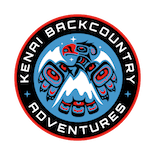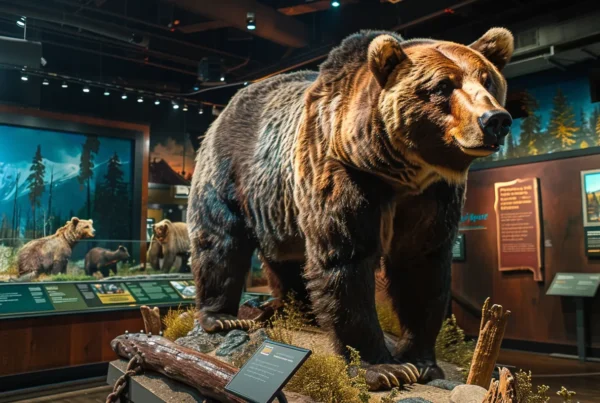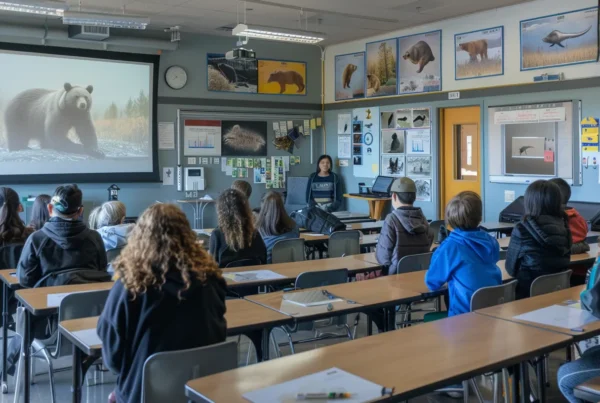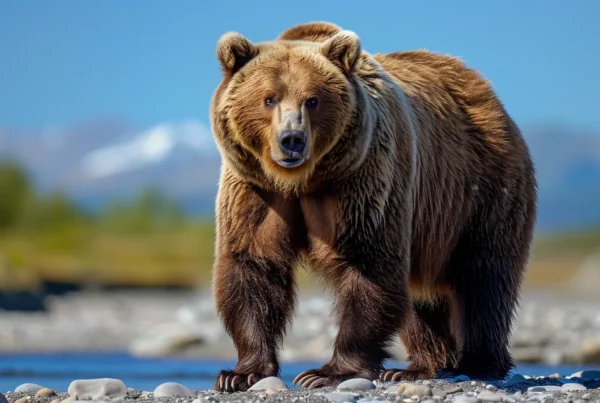WHAT’S HAPPENINGin the wildlife world? |
|
Shorebirds such as rock sandpipers forage in winter flocks along rocky beaches. |
|
Waterfowl such as goldeneyes, scoters, loons, mergansers and grebes winter in nearshore marine waters and open freshwater. |
|
Swans winter in estuaries and open waters such as the upper Kenai River. |
|
||||||||||||
Pine siskins, crossbills, pine grosbeaks, redpolls and other seed-eating birds travel in flocks, feeding on spruce and alder cones. |
|
Flocks of snow buntings feed along grassy dunes, estuaries, and shorelines. |
|
Owls establish territories, and can be heard calling at night. |
|
Ducks, geese, and swans migrate; some remain on the Peninsula through the summer to nest. |
|
Enormous flocks of shorebirds migrate through, stopping at estuaries; some remain on the Peninsula through the summer to nest. |
|
Sandhill cranes migrate through the Kenai Peninsula, stopping at estuaries, tundra areas, and wetlands. Some remain to nest. |
|
Courting spruce grouse display in early mornings and late evenings in mixed spruce/hardwood forests. |
|
Songbirds such as warblers and thrushes, plus swallows and hummingbirds, are in migration. |
|
Pelagic birds such as shearwaters can be seen offshore, migrating in large flocks. |
|
Resident waterfowl such as loons, grebes, mergansers, ducks, swans, and geese nest and raise young. |
|
Seabirds such as gulls, terns, cormorants, puffins, murres, and guillemots gather at breeding colonies, nest, and raise young. |
|
Alpine birds such as pipits, larks, redpolls, longspurs, and ptarmigan nest and raise young. |
|
Raptors such as harriers, sharp-shinned hawks and falcons migrate. They can be seen in passes and estuaries. |
|
Resident songbirds sing, nest, and raise young. |
|
Songbirds form mixed flocks to migrate south. |
|
Herring spawn (lay their eggs) on seaweed, drawing birds, fish and others to a spring feast. |
|
Eulachon (hooligan), small oily fish, swim upriver to spawn. |
|
Salmon smolts migrate from fresh water systems to the sea, attracting a variety of predators. |
|
Chinook salmon return to spawn in larger rivers. |
|
Sockeye salmon return to spawn in lake/river systems. |
|
Pink salmon return to spawn in small streams and rivers. |
|
Chum salmon return to spawn in small streams and rivers. |
|
Coho salmon return to spawn in lake/river systems. |
|
Wood frogs chorus in freshwater wetlands. |
|
Beluga whales can be seen in Turnagain Arm and the Kenai River. |
|
Sea lions pup at rookeries. |
|
Harbor seals give birth, often on drifting ice from tidewater glaciers. |
|
Humpback whales feed in offshore waters. |
|
Black and brown bears are out of dens and active. |
|
Moose, dall sheep and mountain goats give birth. |
|
Dall sheep and mountain goats are most visible against snow-free mountain slopes. |
|
Dall sheep and mountain goats are in rut. |
|
Caribou calve. |
|
Caribou graze in tundra areas, sometimes in small herds. |
|
Caribou can be seen grazing on the Kenai Flats. |
|
Caribou are in rut. |
|
Moose are in rut; males spar with each other. |
|
Marmots are out of dens and active. |
|
Weasels, snowshoe hares and ptarmigan wear winter white. |
|
Marine mammals active and present year-round include killer whales, harbor seals, sea otters, harbor porpoises and sea lions. |
|
Land mammals active and present year-round include moose, caribou, wolves, and coyotes. |
|
Birds active and present year-round include bald eagles, gulls, ravens, gray and Steller’s jays, magpies, and chickadees. |
|





